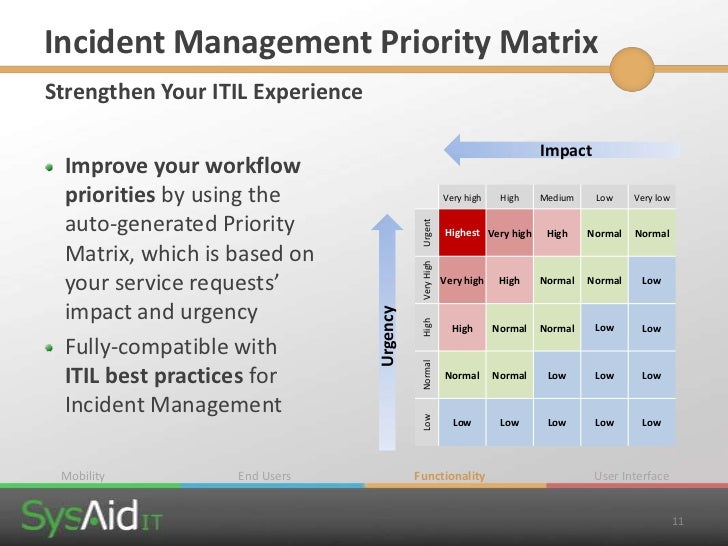
If possible, a temporary Workaround is supplied. Process Objective: To identify the underlying root cause of a Problem and initiate the most appropriate and economical Problem solution.Process Objective: To record and prioritize the Problem with appropriate diligence, in order to facilitate a swift and effective resolution.Problem Categorization and Prioritization Proactive Problem Management aims to identify and solve Problems and/or provide suitable Workarounds before (further) Incidents recur. Process Objective: To improve overall availability of services by proactively identifying Problems.These are the ITIL Problem Management sub-processes and their process objectives: ITIL 4 refers to "Problem management" as a service management practice ( see above). 1)shows the key information flows and process interfaces. The process overview of ' ITIL Problem Management' (fig. Configuration Management provides data used to identify Problems and link them to particular Configuration Items.Change Management may be invoked from Problem Management if a Change is needed to resolve a Problem.Problem Management uses data collected during Incident resolution for Problem identification. Problem Management provides information to the Incident Management process, such as Workarounds and Known Errors.Problem Management interfaces with a number of other ITIL processes:
ITIL PRIORITY MATRIX FULL
This will ensure the problem record contains a full historical description and that all relevant records are updated. When a final solution has been deployed, the Problem Record should be formally closed.

If possible, Problem Management will provide a Workaround - a temporary solution that can be used for dealing with related Incidents while a permanent solution for the Problem is being developed. Once a Problem has been identified and diagnosed, it becomes a " Known Error". to find patterns and trends that may indicate the presence of underlying errors.

For example, Problem Management will analyze Incident Records, operational logs etc.

ITIL V4 is no longer prescriptive about processes but shifts the focus on 34 'practices', giving organizations more freedom to define tailor-made processes. 1) follows the specifications of ITIL V3, where Problem Management is a process in the service lifecycle stage of Service Operation. The Problem Management process described here ( fig.


 0 kommentar(er)
0 kommentar(er)
